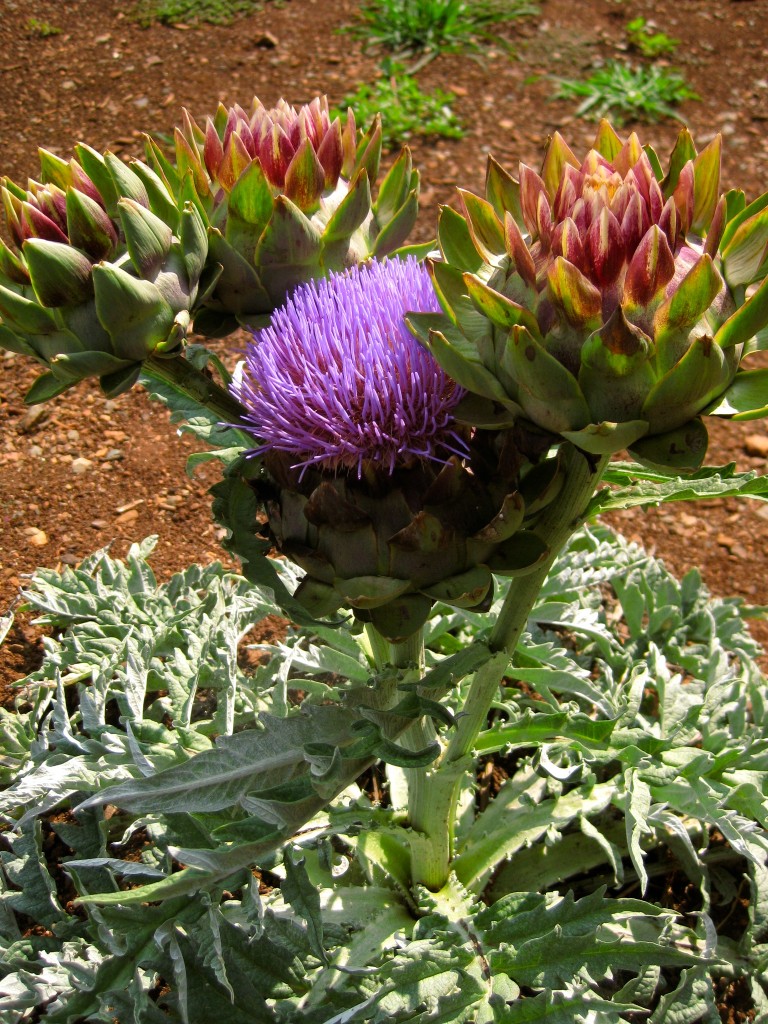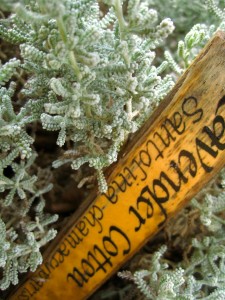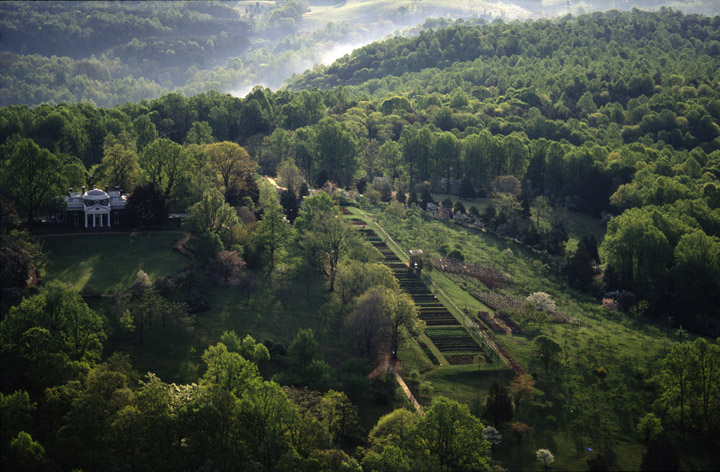 Monticello is the Virginia plantation that Thomas Jefferson spent 41 years building and the home to which he brought all of the inventions of clever common sense he found in Europe or Antiquity’s texts: a machine that duplicates with one pen on a piece of paper the motion of the pen worked by a human hand on another; a Lazy Susan for books; a clock to hang in a continent of folks who’d never seen one. He invented a plow and designed into the house components so simple as to be plucked from the seed of artfulness just before passing the threshold of “invention”: a weather vane on the roof attached to swing a compass on the ceiling of the vestibule; the weights that turned the clock unspooling up the wall along a seven-day calender, telling the time.
Monticello is the Virginia plantation that Thomas Jefferson spent 41 years building and the home to which he brought all of the inventions of clever common sense he found in Europe or Antiquity’s texts: a machine that duplicates with one pen on a piece of paper the motion of the pen worked by a human hand on another; a Lazy Susan for books; a clock to hang in a continent of folks who’d never seen one. He invented a plow and designed into the house components so simple as to be plucked from the seed of artfulness just before passing the threshold of “invention”: a weather vane on the roof attached to swing a compass on the ceiling of the vestibule; the weights that turned the clock unspooling up the wall along a seven-day calender, telling the time.
Jefferson imagined an America of gentlemen farmers. He himself was a farmer, would have been a gardener were it not for the free labor of 200-odd slaves whom the museum now refers to as “enslaved workers.” I like how it shifts the emphasis.
Jefferson considered the introduction of horticultural wonders a responsibility. His slaves cut his vegetable garden out of the side of the mountain with hand tools. They created a small bluff over sloping fields he would try unsuccessfully forever to turn into a vineyard. The garden was dinner, botanist’s experiment, and showpiece. It included a pavilion with a pyramidal roof and a reading bench.
The garden is kind of awesome.
Jefferson regularly planted and tinkered with 250 or more plants. He’d name them in his books after the person who gave him the seed (Leitch; Shannon) or maybe the place of origin (Tuscany; Ohio). It’s tough to nail down just all of what was grown. The present reconstruction does its best, I presume, and its best last week was excellent.
Amongst the bevy there now, chosen for inclusion here for beauty or random impulse or the cool factor, are:
This artichoke plant!
I’d never seen an artichoke plant before, or at least not one in young purple flower with wintermint-green leaves and a crown of split red.
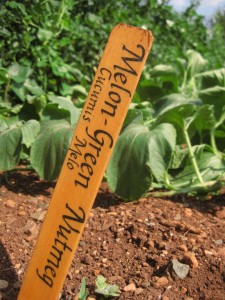 In the heirloom category, we found the remaining vines of Green Nutmeg Melon, which apparently earned its name by smell.
In the heirloom category, we found the remaining vines of Green Nutmeg Melon, which apparently earned its name by smell.
We also caught this number, which felt true to its name against my cheek.
And this for obvious reasons…
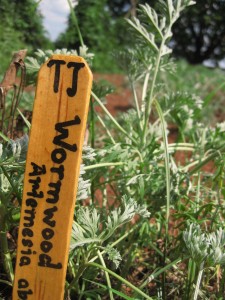 …except that I just learned that wormwood has been used to combat various ailments since at least the ancient Egyptians, which I suppose I could have surmised, and is also a primary ingredient in vermouth, which I never would have guessed. Turns out “vermouth” comes from “wermut,” the Gernman for wormwood. I’d hope Jefferson would have made at least one batch of absinth, though. He was an Enlightenment guy. I’m optimistic.
…except that I just learned that wormwood has been used to combat various ailments since at least the ancient Egyptians, which I suppose I could have surmised, and is also a primary ingredient in vermouth, which I never would have guessed. Turns out “vermouth” comes from “wermut,” the Gernman for wormwood. I’d hope Jefferson would have made at least one batch of absinth, though. He was an Enlightenment guy. I’m optimistic.
For the awesome name category, we found in the visitor’s center vials of seed for the Hotspur garden pea, the Marrowfoot garden pea, and Creasy Greens, the Latin for which is Barbarea Vulgaris. The base barbarian?
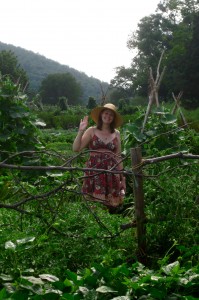 And here, in case you’re still reading, are Shannon and myself. Dig Shannon’s sun hat, a major concession to Nature from a woman who hates hats. And…
And here, in case you’re still reading, are Shannon and myself. Dig Shannon’s sun hat, a major concession to Nature from a woman who hates hats. And…
…dig my shorts that, through the wonder of framing the real world into pixels, look a bit like pantaloons.

